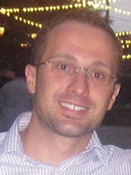Program Information
High Spatiotemporal Resolution Self-Sorted 4D MRI
E Subashi*, Y Liu , S Robertson , P Segars , B Driehuys , F Yin , J Cai , Duke University Medical Center, Durham, NC
Presentations
TH-EF-BRA-10 (Thursday, August 4, 2016) 1:00 PM - 2:50 PM Room: Ballroom A
Purpose: To describe a novel method for self-sorted 4D-MRI and to characterize the output image quality as measured by signal-to-noise ratio (SNR), spatiotemporal resolution, and level of artifact.
Methods: A three-dimensional radial sampling function with a quasi-random distribution of polar/azimuthal k-space angles was implemented in a standard pulse sequence. Acquisition time was approximately 2 minutes. The DC component of the k-space signal was used to estimate and sort the breathing cycle into ten respiratory phases. For a given respiratory phase, the k-space data were combined with the periphery of the k-space data from all phases and reconstructed with the re-gridding algorithm onto a 128³ matrix. The extent of data sharing was controlled by the average breathing curve. The sampling and reconstruction technique were tested and validated in simulation, dynamic phantom, animal, and human studies with varying breathing periods/amplitudes.
Results: The signal at the k-space center accurately measures respiratory motion over a large range of breathing periods (0.5-7.0 seconds) and amplitudes (5-30% of FOV). Sharing of high frequency k-space data driven by the average breathing curve improves spatial resolution and artifact level at a cost of an increase in noise floor. Although equal sharing of k-space data improves resolution and SNR, phases with large temporal changes accumulate considerable distortion artifacts. In the absence of view-sharing, no distortion artifacts are observed while spatial resolution is degraded.
Conclusion: The use of a quasi-random sampling function and view-sharing driven by the average breathing curve provide a feasible method for self-sorted 4D MRI at reduced acquisition times. This approach allows for the extent of data sharing to be inversely-proportional to the average breathing motion hence improving resolution and decreasing artifact levels.
Funding Support, Disclosures, and Conflict of Interest: NIH-1R21CA165384
Contact Email:

